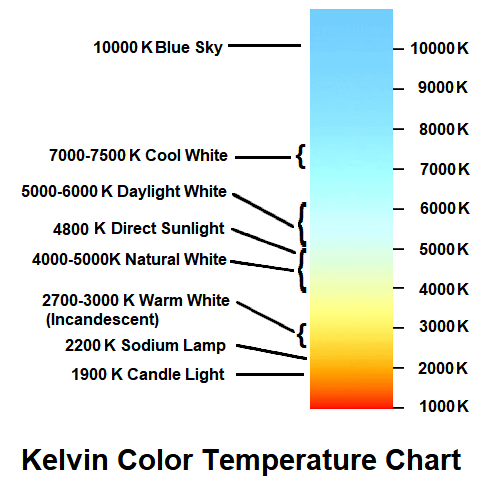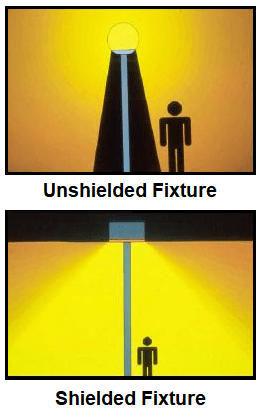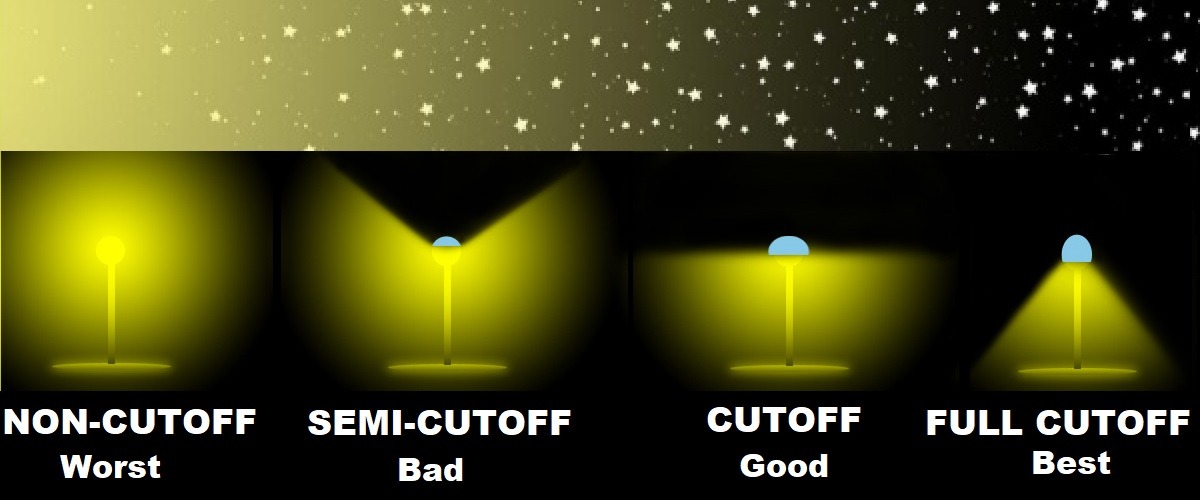How to Prevent Light Pollution
Unlike other types of pollution, light pollution can be controlled or reduced by properly managing your outdoor lighting. Outdoor lighting serves a purpose — to provide visibility and safety at night, but like many other things, over-used or mismanaged lighting often becomes a problem or a nuisance to others. Consider these guidelines to help you reduce light pollution without sacrificing your safety and well being.
1. Warm Lighting – Choose compact fluorescent lamps (CFL) and LED bulbs that produce warm white lighting. Many bulbs emit light with a short, blue wavelength that scatters easily into the atmosphere. This adds to light pollution, decreases night vision, and causes eyestrain. Look for a Kelvin rating of 3000 K or lower—2700 K is preferred.

2. Shielding – Choose shielded light fixtures. These fixtures have a solid cap that surrounds the light bulb and prevents light from being emitted directly into the sky. Many times, existing fixtures can be retrofitted by adding a shield, which often are available at very reasonable prices.

3. Brightness – Choose light bulbs with the lowest brightness appropriate for the task. At one time, flood lights were typically 150 watts, or even 300 watts. You probably will find that 75 watts (or 75-watt equivalent) is sufficient for lighting your property. We say “equivalent” because with CFL and LED bulbs, the same brightness can be accomplished at much lower energy usage. Wattage is a measure energy consumption. The unit for measuring brightness is the lumen.
4. Cut Off Fixtures – Choose outdoor light fixtures with cutoff angles that prevent light from being emitted above the horizontal plane. Cutoff lighting shines downward toward the ground where it’s needed most, and in many cases, this improves visibility. The Illuminating Engineering Society of North America (IESNA) has established the following cutoff classifications:
a. Full Cutoff – With full cutoff, no light is emitted at or above an angle of 90 degrees from the nadir (horizontal plane). The intensity does not exceed 100 Candela per 1000 lamp Lumens (10 percent) at a vertical angle of 80 degrees from the nadir.
b. Cutoff – A small amount of uplighting is permitted with cutoff light fixtures. The intensity does not exceed 25 Candela per 1000 lamp Lumens (2.5 percent) at a vertical angle of 90 degrees from the nadir. The intensity does not exceed 100 Candela per 1000 lamp Lumens (10 percent) at an angle of 80 degrees from the nadir.
c. Semi-Cutoff – Semi-cutoff light fixtures emit more light directly into the sky and provide little control at the property line. The intensity does not exceed 50 Candela per 1000 lamp Lumens (5 percent) at an angle of 90 degrees from the nadir. The intensity does not exceed 200 Candela per 1000 lamp Lumens (20 percent) at an angle of 80 degrees above nadir.
d. Non-Cutoff – Non-cutoff light fixtures distribute light without Candela limitation in the zone above the max Candela.

5. Motion Sensors – Choose outdoor fixtures that have motion sensors. These fixtures turn on only when they are needed and then turn off a short time later. The sensitivity of the motion sensor should be adjusted to prevent the lights from turning on and off unnecessarily.
6. Certified Lighting – Choose outdoor fixtures that have the IDA fixture seal of approval (FSA). The IDA maintains a database of fixtures that have been certified as dark-sky friendly. If you live near the beach, choose certified Turtle-Safe Lighting. These light fixtures are shielded and produce a long wavelength light. They should be mounted as low as possible to minimize light trespass, and they should have the lowest amount of light needed for the task.
7. Unnecessary Use – Avoid using wasteful dusk-to-dawn lighting. Turn off all outdoor lighting before going to bed, or at least by 11 PM. Turn off indoor lighting when you are not home or when it is not needed. Close the blinds and curtains to prevent light spill. Besides reducing light pollution, you’ll also be saving engergy.
8. Get Involved – Besides managing your lighting at home, consider steps to prevent or reduce light pollution where you work. Ask management to turn off or dim office lights at the end of the day after all workers have left. Not only will this help reduce light pollution, but it will lower energy consumption. If you see local businesses with poor lighting practices, let them know what they can do to reduce light pollution. Join with other like-minded citizens by becoming a member of an organization like the Internation Dark Sky Association or the Comal Country Friends of the Night Sky.
And what do you do if your neighbor’s lighting is infringing on your home or property? Take a look at the “Be A Good Neighbor” page.
Get Involved

Protect your community from Light Pollution!
The Comal County Friends of the Night Sky was formed in April, 2020 by a group of concerned residents who first met using Zoom. We are working on several initiatives to facilitate night sky friendly lighting in order to preserve and improve the stunning night sky of the Texas Hill Country and Comal County, TX.
Learn About Upcoming Events
Subscribe to our Newsletter to keep up with our upcoming events!
